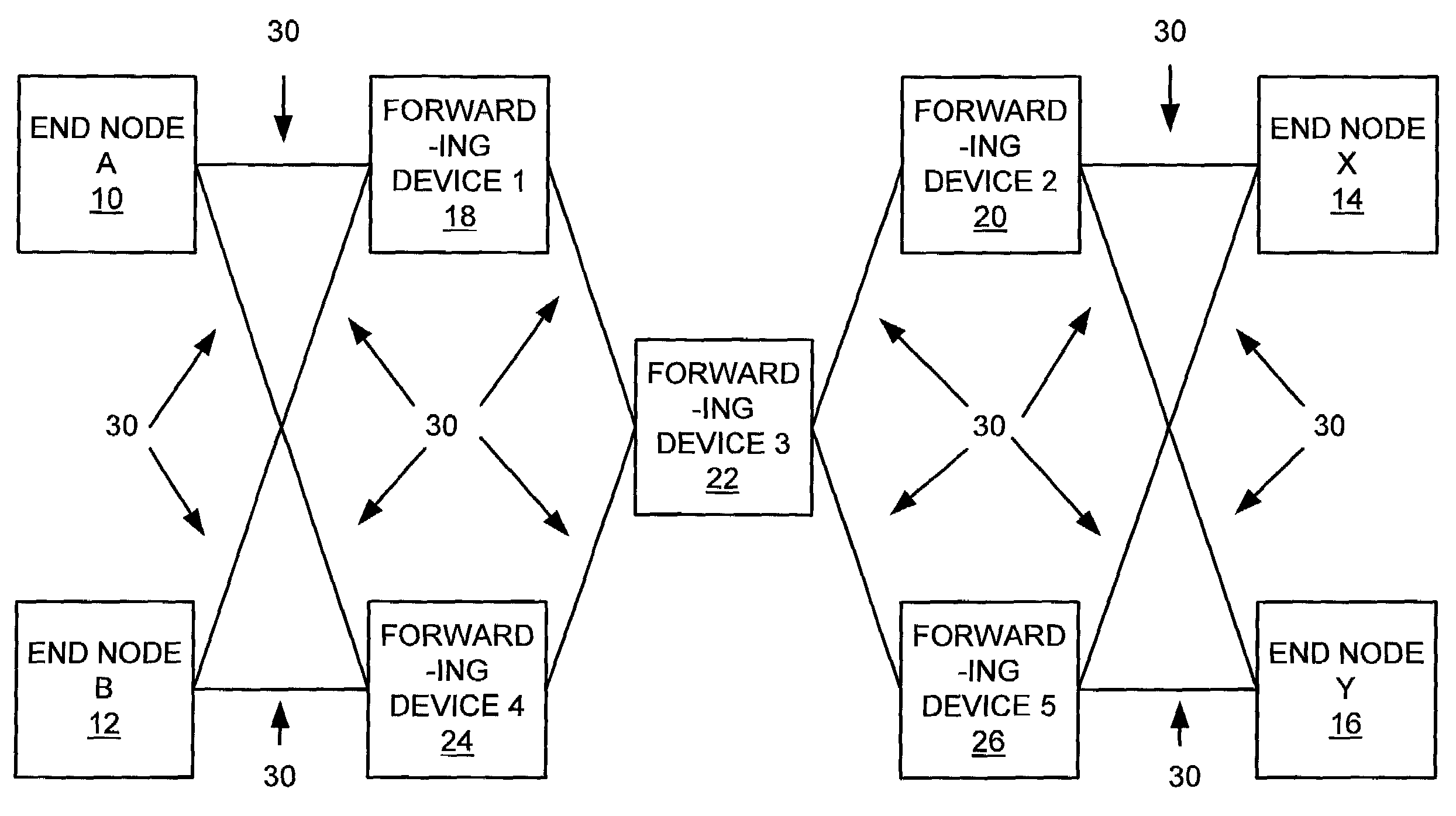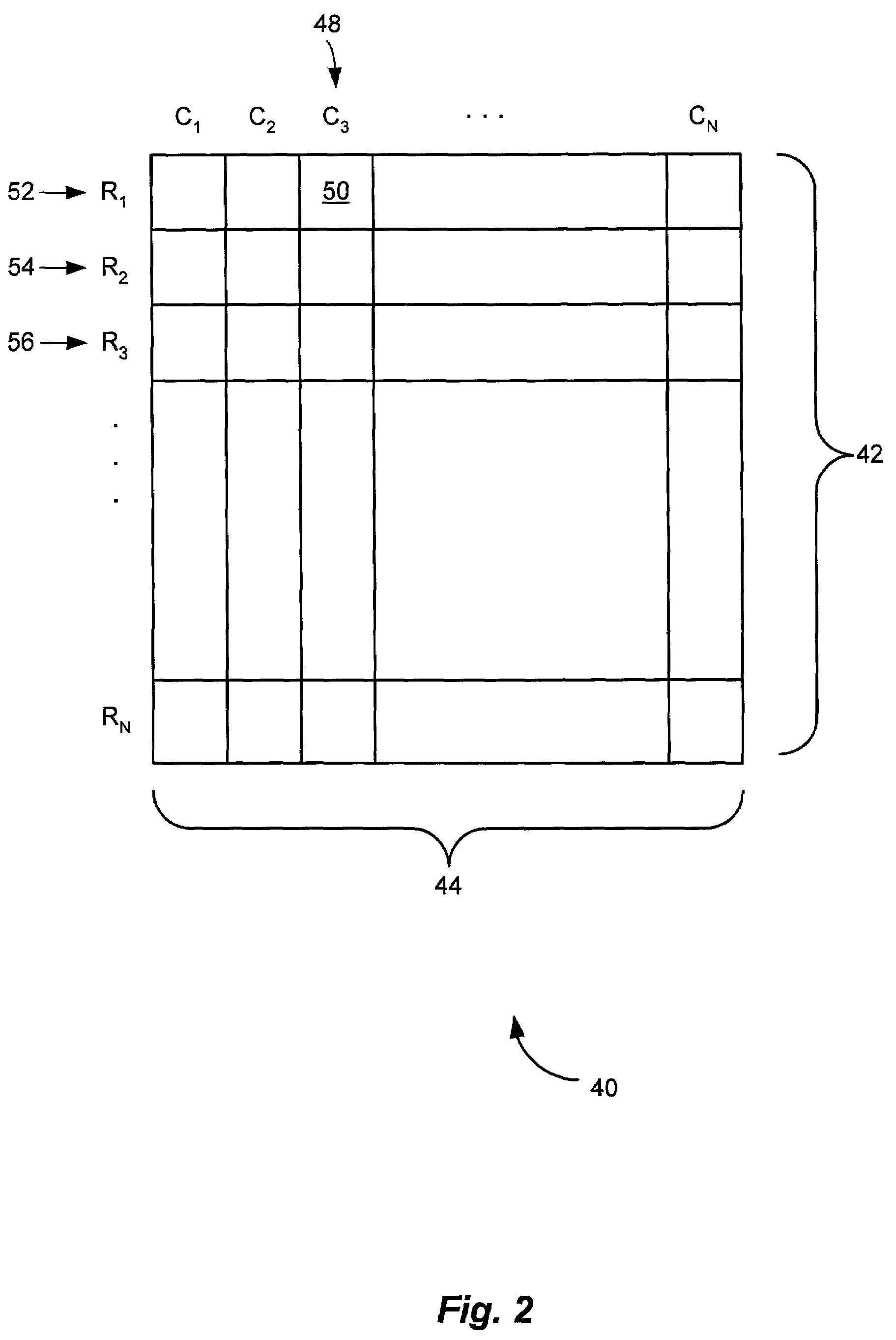Method of optimizing network capacity and fault tolerance in deadlock-free routing
a network capacity and fault tolerance technology, applied in data switching networks, frequency-division multiplexes, instruments, etc., can solve problems such as inability to forward received data, inability to provide optimal load balancing on a network wide basis, and inability to optimize network capacity. to achieve the effect of optimizing network-wide capacity
- Summary
- Abstract
- Description
- Claims
- Application Information
AI Technical Summary
Benefits of technology
Problems solved by technology
Method used
Image
Examples
Embodiment Construction
[0022]The disclosed system involves generation of routing information for a network of devices, such as the network of devices shown in FIG. 1. FIG. 1 shows a communication network including a number of end nodes, shown as end node A 10, end node B 12, end node X 14, and end node Y 16. The end nodes in FIG. 1 communicate with one another through a number of forwarding devices, such as switches, shown as forwarding device 118, forwarding device 220, forwarding device 322, forwarding device 424, and forwarding device 526. The links interconnecting the devices shown in FIG. 1 may consist of any appropriate type of communications media, including fiber optic or other media. Each of the devices shown in FIG. 1 may include one or more processors for executing program code stored within a program code memory, and / or hardware logic providing specific functionality.
[0023]During operation of the devices shown in FIG. 1, a routing table representing a deadlock-free set of minimum cost routes i...
PUM
 Login to View More
Login to View More Abstract
Description
Claims
Application Information
 Login to View More
Login to View More - R&D
- Intellectual Property
- Life Sciences
- Materials
- Tech Scout
- Unparalleled Data Quality
- Higher Quality Content
- 60% Fewer Hallucinations
Browse by: Latest US Patents, China's latest patents, Technical Efficacy Thesaurus, Application Domain, Technology Topic, Popular Technical Reports.
© 2025 PatSnap. All rights reserved.Legal|Privacy policy|Modern Slavery Act Transparency Statement|Sitemap|About US| Contact US: help@patsnap.com



